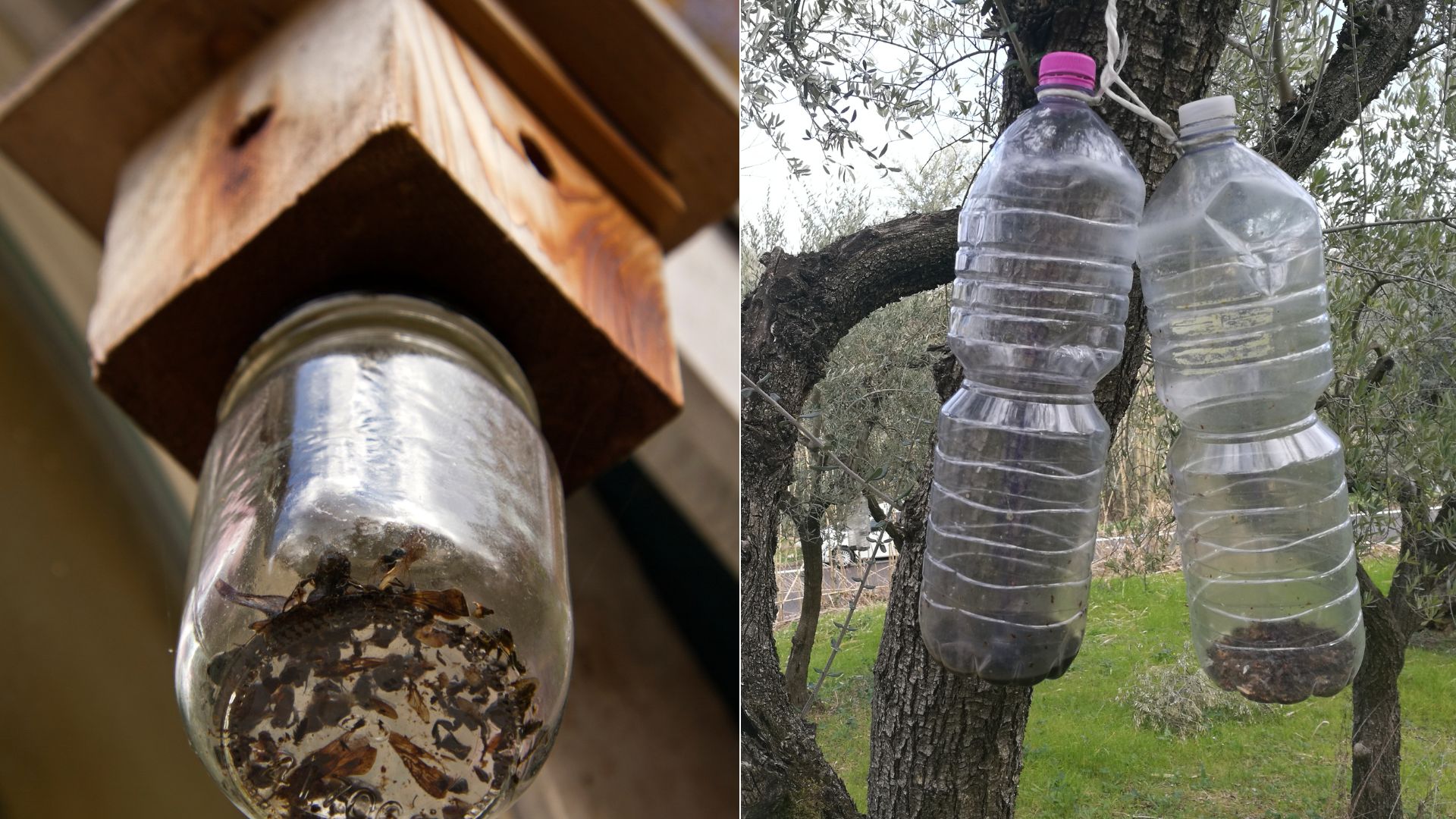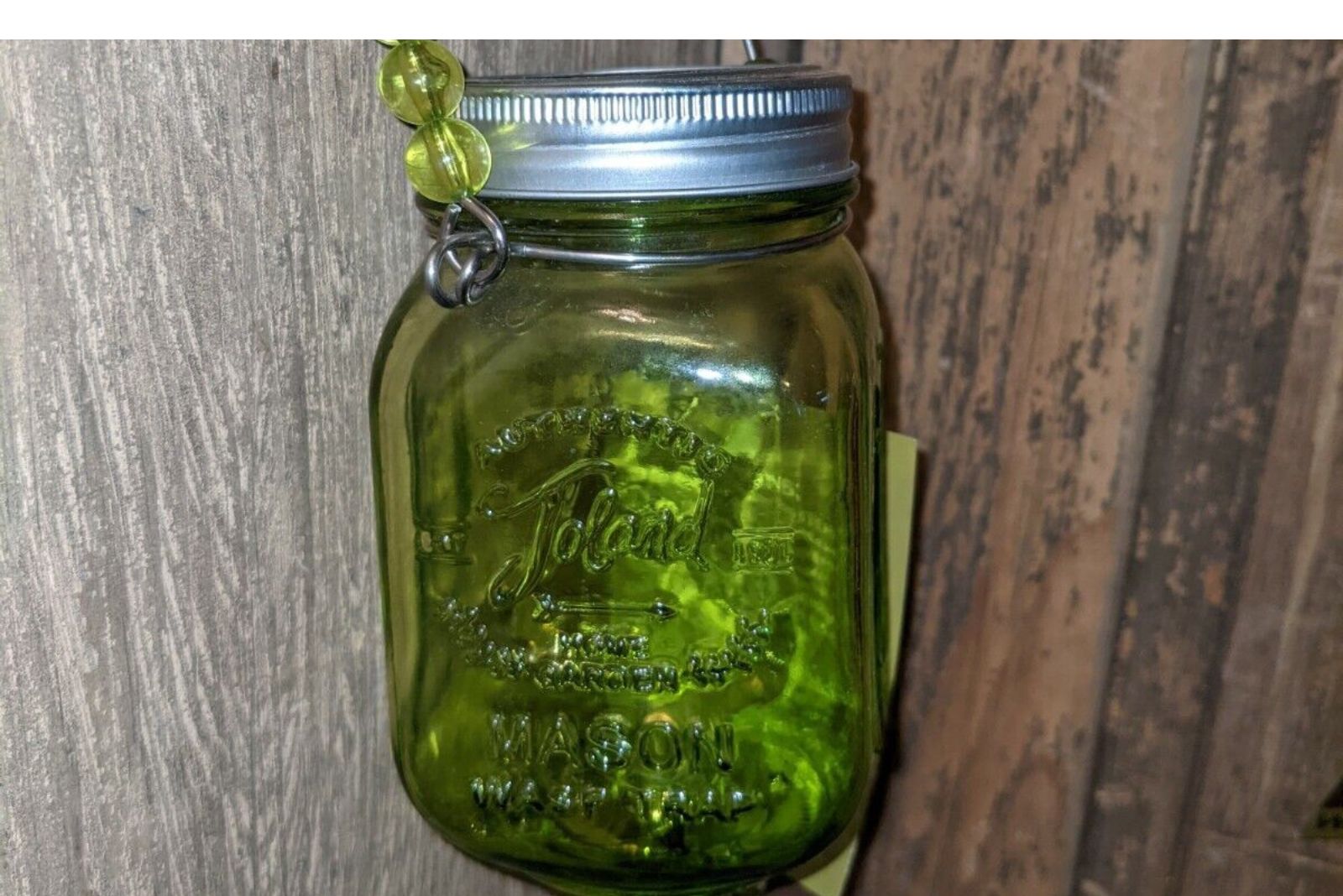The end of the summer is getting closer; temperatures have already started to drop so we spend way more time in our backyards. Many people agree that this is the best period of the year.
Well, I prefer using the words “almost the best”. Flying pests are still here and most likely won’t leave for a few more weeks.
I’ve been purchasing different products to get rid of these nuisances. Some of them worked, but honestly, their price made me look for new solutions.
In this article, I’ll show you 3 brilliant DIY bug traps that will help you eliminate fruit flies and gnats as well as the most annoying pests of all time, those that bite, of course.
Let’s get started!
1. Make A Trap Using Mason Jars
Let’s be honest, even though gnats and fruit flies aren’t dangerous, the very thought of them flying around me or my food makes me uncomfortable.
So, the trap I’m about to show you will help you get rid of these pests in no time.
First, you need to gather the equipment. Luckily, you’ll only need a few things; start with a mason jar. Basically, any jar or small container will work, but I prefer using wide-mouth mason jars with a metal lid.
You should also prepare a pair of sharp-pointed scissors, apple cider vinegar, and a few drops of dish soap.
Now take the metal lid and make a few small holes using the scissors. Some people simply cover the jar with plastic wrap, punch a couple of holes, and secure everything with a rubber band. Well, I prefer to stay on the safe side.
Pour some apple cider vinegar into the jar along with the dish soap and put the lid on. The role of dish soap is to trap the wings of fruit flies and gnats so that they can’t escape. That’s it!
2. Use A Plastic Bottle
I’m sure you’ve already seen people using plastic bottles as a pest-elimination method. Interestingly, you can use them to get rid of various pests, such as mosquitoes, flies, wasps, and hornets. But, the bait differs for each pest.
Let’s first prepare the bottle and then make the bait. Prepare any rigid plastic bottle with a narrower upper part. I use 2-liter bottles since they’re the most common.
You should remove the upper part of the bottle at the point where it starts to narrow. Invert the cut part, put it back in the bottle, and secure everything with tape.
You can also make 2 holes on opposite sides of the bottle, put a wire through them, and hang the bottle somewhere.
Bait is actually the most important part of this technique. Let’s see which bait to use for specific pest species.
Mosquito trap
There are some great DIY mosquito repellents, but this one is my favorite. You need to prepare a ¼ cup of brown sugar, a cup of hot water, and a few drops of dish soap. I’ve seen that some people add yeast to this mixture but I think that sugar is enough.
Dissolve the sugar in water, add dish soap, and your solution is ready. I recommend putting the bottle in a shadier spot and painting it in some color.
Fly trap
If you want to attract flies to the bottle, simply add a few drops of fruit-scented dish soap to the water. Instead of sugar, I recommend adding some decomposing fruit.
Hornet and wasp trap
Nothing scares me more than murder hornets so I start preparing for the battle as soon as the spring arrives.
First, you need to mix water and dish soap and then add grease from cooked meat. Alternatively, you can use mashed up fish. I guess these guys really know about good food.
You can also use the standard mix of 1 part water and 1 part sugar and apple cider vinegar or similar. I always keep this mixture in a well-lit and sunny spot.
Even though this method works for mosquitoes, flies, and other insects, I use it specifically for murder hornets.
3. Use An Untreated Cedar Picket
Generally speaking, male carpenter bees don’t pose a threat to humans but females do sting sometimes and, for me, that’s a valid reason to keep them at bay.
Another reason why I don’t want these creatures in my garden is the holes they leave after they visit wooden structures in my yard.
Instead of painting or treating your wooden structures with off-the-shelf products, here’s what you can do instead. Purchase a cedar picket; I recommend using one that’s about 6 feet in length, 5 inches in width, and half an inch thick.
Cut it into about 6 pieces, each should be approximately 10 inches long. Also make a square that measures ⅞ inches.
Join all the pieces by putting the square piece at the bottom, four pieces to the sides, and two to cover the top. Put the plastic bottle in the center. If you want it to hang, simply attach the hook to the top.
Now take a half-inch drill and make holes; one into the central part of the bottle cap and two at the sides. Don’t worry, bees will most certainly find their way into the bottle. The good thing is that you can take the bottle out (don’t unscrew it) and safely discard it.
Controlling pests in general is a hard task for everyone. Even though most of them aren’t harmful to humans, some may wreak havoc on our properties in the case of severe infestation. Simply make the bug traps I’ve shown you above, and enjoy the rest of the summer!



